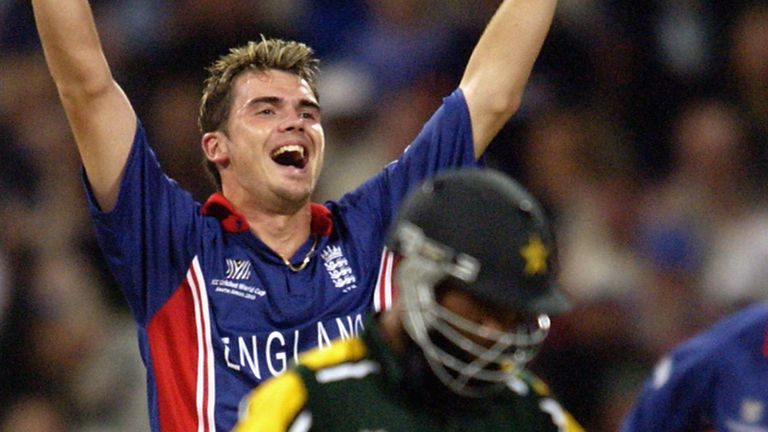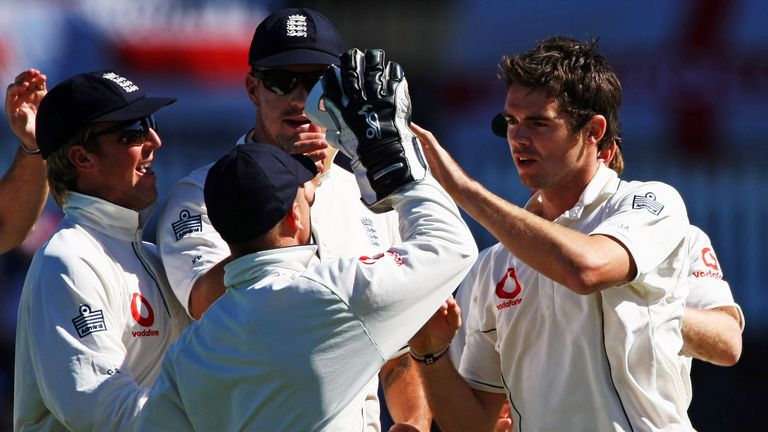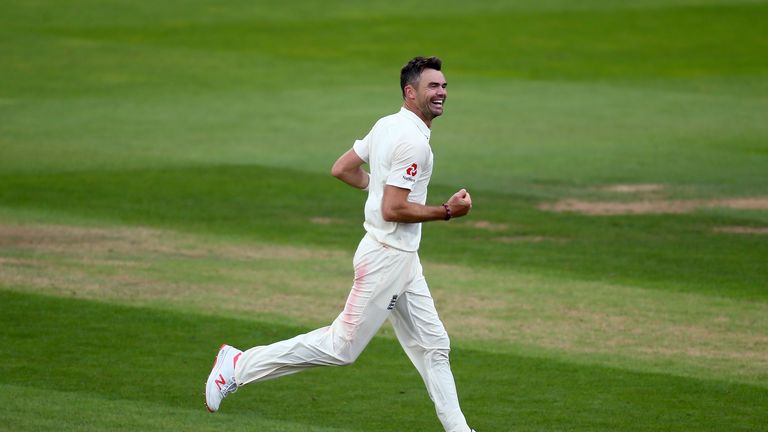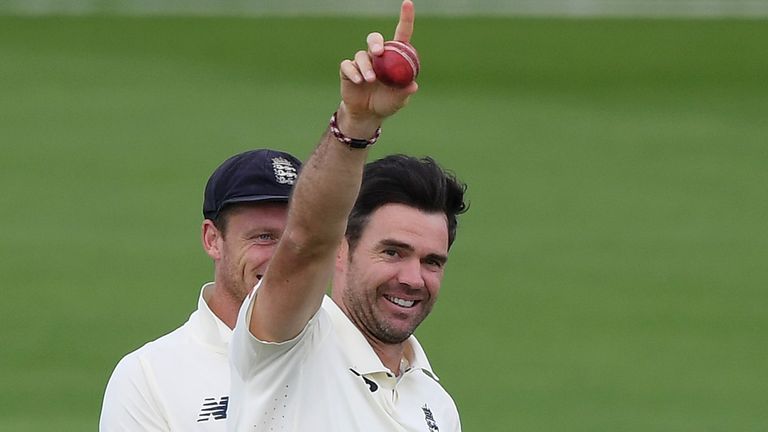
When Fred Trueman became the first bowler to take 300 wickets in Test cricket back in 1964, he is reported to have remarked that anyone who’d break his record would be “bloody tired”.
Well, anyone not named James Anderson perhaps.
Having comfortably cleared that mark in his early 30s, the relentless Anderson claimed a staggering 700th Test wicket, aged 41, on day three of the fifth and final Test between India and England in Dharamshala, when having Kuldeep caught behind by Ben Foakes.
He did it with barely a bead of sweat on his brow and looking as fresh-faced and, certainly on this tour, as flame-haired as he did when making his Test debut over two decades ago.
Anderson continues to deceive and dumbfound deep into the tailend of his career with his skilful mastery of swing and seam bowling, always operating off an immaculate line and length. And there appears no end in sight just yet.
“I have been lucky enough to be on the field for some of Jimmy’s milestones but being there for 700 wickets as a seamer is phenomenal,” said England captain Ben Stokes.
“I’ve said it many times – any young kind who wants to be a fast bowler should look up to him and try and emulate everything he has done. From the first day he was a cricketer, let alone where he is now.
“He is 41 years old and as fit as I have ever seen him and I don’t know when he is going to stop. The desire, the commitment is there.”
Anderson in style before period of struggle
Unlike the metronomic master of his art we get to witness nowadays, albeit equipped with the same blonde tips, Anderson was the rawest of prodigies when ripping out Mark Vermeulen’s off stump with a full and fast delivery for the first of his 700 Test scalps as he claimed a debut five-for against Zimbabwe at Lord’s in 2003.
The precocious 20-year-old had been hurried into England’s one-day squad in Australia only five months earlier. So rushed was the call-up, in fact, that he didn’t have his name or squad number printed on the back of his shirt.
But the world certainly knew of him when, 11 international caps later, Anderson took a match-winning 4-29 to dismantle Pakistan at the World Cup.
Anderson’s first England captain, Sky Sports’ Nasser Hussain, recalled: “Jimmy was the most naturally-gifted bowler I had seen. He was outstanding, in a different league.”
Later that same summer, Pakistan were once more the victims as Anderson took the first-ever hat-trick by an England bowler in ODI cricket. Reflective of a rollercoaster start to his international career, though, there was also an early setback in among scaling such heights as Anderson was smashed for 10 runs in two balls by Andy Bichel in a World Cup-ending defeat to Australia.
Ironically, an attempted remodelling of his action with the aim of preventing injury contributed, firstly, to a loss of form and then to a stress fracture in the summer of 2006 – Anderson restricted to just 20 Test caps out of a possible 64 over his first five years – but the second chapter of his career was to prove a truly special one.
In March 2008, he was picked as part of a new-look England attack along with a certain Stuart Broad – playing in only his second Test – against New Zealand in Wellington, the pair replacing the 2005 Ashes old guard of Matthew Hoggard and Steve Harmison and inspiring a come-from-behind 2-1 series win.
Later that summer, Anderson took his 100th Test wicket, Jacques Kallis, two years later he had 200 to his name and by 2015 he had doubled that mark, passing Sir Ian Botham’s previous England record of 383 along the way.
Ashes wins and personal milestones rack up
During this period of personal growth, Anderson also more than played his part in three straight Ashes triumphs (2009-2013), including a first win in Australia for 24 years while, in 2011, England were crowned No 1 in the world Test rankings.
Australia hasn’t always been his happiest of hunting grounds but, in England’s 2010/11 triumph Down Under, Anderson’s 24 wickets at an average of 26.04 topped the charts, while he was the leading seamer – 12 wickets at 30.25 – when India were last defeated by any team in a home series in 2012, their first to England for 28 years.
Anderson’s success on that tour, as well as his admirable efforts in featuring in four straight Tests in this series, taking 10 wickets, showcases his incredible versatility and dismisses any suggestion that the seamer is his most effective only in helpful English conditions.
That’s not to say that he’s not utterly devastating on a lively pitch, with grey skies overhead and a Dukes ball in hand.
Anderson’s 500th Test wicket came under such circumstances when, against the West Indies at Lord’s in the late summer of 2017, he dismantled Kraigg Brathwaite’s middle stump with a devastating in-swinger on his way to claiming career-best figures of 7-42.
Almost exactly a year later, India this time the visitors and The Oval the setting, it was Mohammed Shami’s middle stump that was flatted as Anderson took his 564th Test wicket to surpass Glenn McGrath as the prolific pace bowler in the history of Test cricket. And he was far from done yet.
That said, after a remarkable run from 2008 to 2018 in which Anderson only once failed to take more than 40 wickets in a calendar year (35 in 2011) and averaged below 30 in nine of 11 of those seasons, the last few years have seen a fair few challenges thrown his way.
Anderson responds after fearing for his England future
Injury struck on the first morning of the 2019 Ashes and restricted him to only five appearances and 12 wickets that year; the Covid-affected summer of 2020 proved challenging, with the rested-and-rotated Anderson taking only six wickets across his first three Tests, before seven to end the summer in Southampton included his 600th.
His 1,000th first-class wicket came in 2021 as he finished with frankly astonishing career-best figures of 7-19 for Lancashire against Kent but, less than a year later, he was left “praying this isn’t the end” of his international career when he and long-time partner in crime Broad were both left out of England’s tour to West Indies off the back of a third successive winless Ashes tour of Australia.
“It was a shock and a disappointment to get that call,” Anderson told the BBC’s Tailenders podcast at the time. “It’s important I try to focus on stuff I can control. That’s showing people what I can do with the ball in my hand.
“There have been quite a few texts between myself and Broady, in particular, getting some initial anger and frustration out, but now that that has gone, it is looking to stuff we can affect.”
The pair, aged 39 and 35 at the time – and with a combined tally of 1,177 Test wickets – appeared to be the scapegoats as England started succession planning at seamer and the obituaries began to be written.
But, a 1-0 series defeat in the Caribbean prompted a change in leadership as Ben Stokes came in as captain alongside new head coach Brendon McCullum and Anderson, as with many others, thrived under new direction, more than playing his part in 10 wins from 11 to start the age of Bazball.
While their struggles in India have put the team’s bold approach under the microscope – an innings drubbing in the final Test at Dharamsala ensuring England suffered a 4-1 series defeat – Anderson has been effective, bouncing back superbly from an innocuous Ashes series last summer.
Seven hundred wickets to his name (and counting), an England-record 187 Test caps and turning 42 in July, Anderson is far from tired just yet.
Stream the Women’s Premier League, Pakistan Super League and more cricket with a NOW Sports Month Membership – just £21 a month for 12 months. No contract, cancel anytime.
Get Sky Sports on WhatsApp
You can now receive messages and alerts for the latest sports news, analysis, in-depth features and videos from our dedicated WhatsApp channel. Find out more here…









